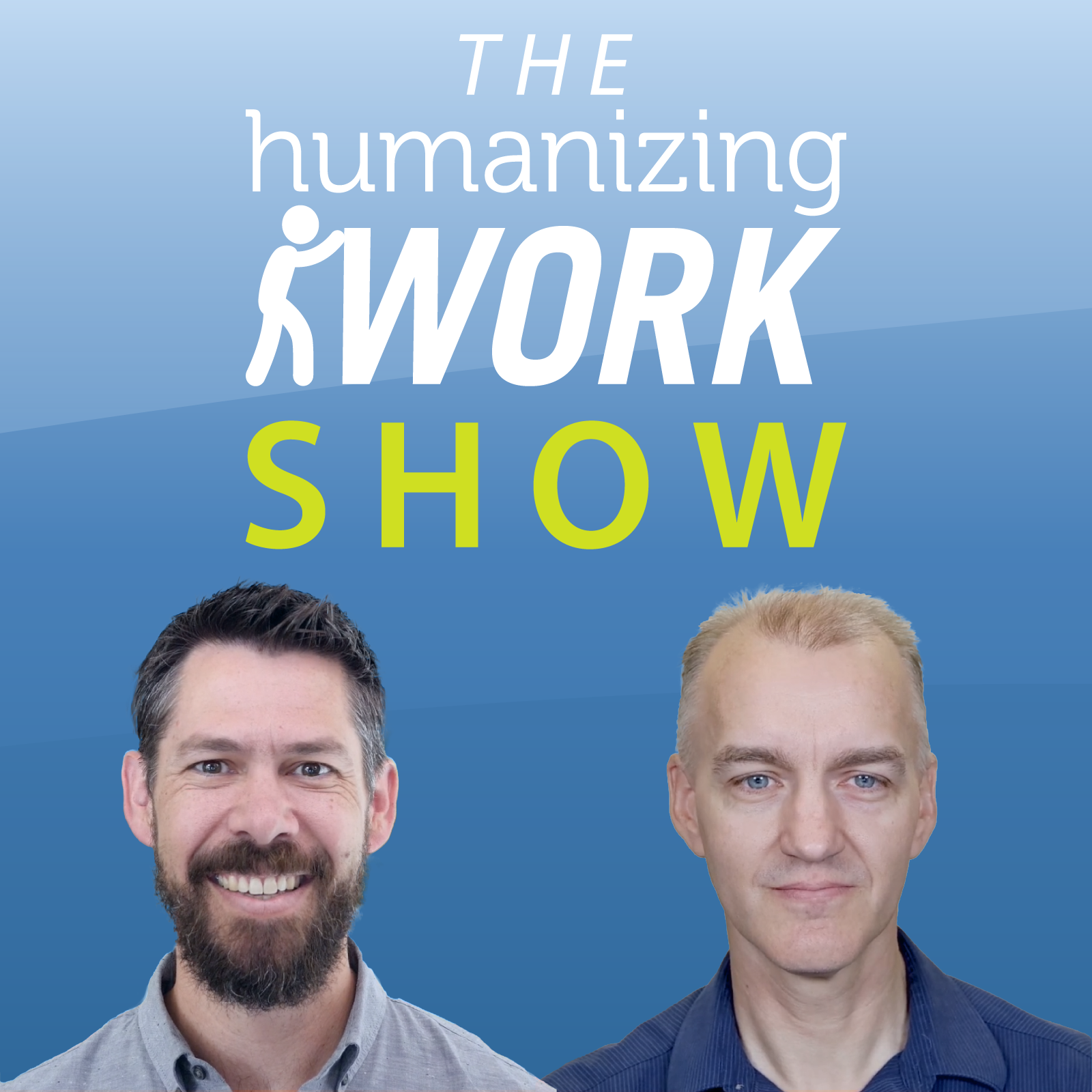Episode Transcript
### Peter
Last fall, I was on a Zoom call with a new client, a C-level executive. After a quick intro, she paused and exhaled, clearly frustrated.
‘I don’t understand,’ she said. ‘Empowerment is one of my core values. I’ve spent 18 months trying to give my team more autonomy—communicating why it matters, encouraging managers to cascade the message. But the employee survey just came back, and the top complaint was: “Lack of autonomy. Too much micromanagement.” What am I doing wrong?’
As we dug into the details, a pattern emerged. She had talked about empowerment, but her managers hadn’t *lived* it. Empowerment is much more than saying “you’re empowered,” and without real behavior change, the skepticism was high. Now when leaders talked about empowerment, employees started rolling their eyes.
### Richard
We call that empowerment theater—when a leader says, out loud, “you’re empowered, you own this decision,” but says with their actions, “you’re empowered as long as you make the decision I would make.”
It’s like giving someone a car but keeping the keys. They hear ‘you’re empowered,’ but all they feel is frustration.
So in this episode, we’ll share how to shift from empowerment theater to real, productive empowerment. The kind that leaves employees feeling motivated, making good delegated decisions, and contributing real creative, innovative solutions to the most pressing business needs.
### Peter
Before we dive in, a quick reminder: The Humanizing Work Show is brought to you by the Humanizing Work company, where we help organizations transform leadership, product management, and collaboration. If you’re ready for better results, visit [humanizingwork.com](http://humanizingwork.com/) to schedule a conversation. And if you enjoy the show, don’t forget to subscribe, leave a review, and share your thoughts in the comments!
### Richard
In consulting with product development organizations, we often see this gap between intended empowerment and reality. I was working with a team recently where leadership kept saying "you own the backlog," but every sprint planning the same exec would show up and completely reorder their priorities.
### Peter
That's another classic and all too common example of empowerment theater. There’s a big risk that over time, it will create a learned helplessness where teams stop even trying to make decisions because they know they'll get overruled anyway.
### Richard
Yeah, we’ve seen that more than once, and it’s hard to unwind once it’s in place. So how do we break out of the empowerment theater trap?
### Peter
Most managers we work with see the benefits of greater empowerment. After all, if I empower someone to have autonomy over certain decisions, and the results are good, that’s one less thing I have to focus on as a manager. That’s productive empowerment, and that’s a win-win all around.
### Richard
I like that term–productive empowerment. It’s the opposite of empowerment theater, which is unproductive and demotivating.
So here’s how we’ve seen leaders create productive empowerment:
Empowerment rests on three critical pillars: clarity, capability, and systems. If any one of these pillars is missing, empowerment collapses.
When teams lack clarity, they don’t know what decisions they can make or what success looks like. When they lack capability, they don’t have the skills or information to make good decisions and execute effectively. And when systems are missing or misaligned, even the best clarity and capability won’t translate into real empowerment.
### Peter
Exactly. As a manager, I have a lot of authority to influence systems in ways that my employees might not, so I focus on using that authority to improve the systems that reinforce clarity and build capability.
### Richard
I worked with an education software company that was struggling with product teams having to wait for the database team to approve and implement database changes for them. The exec in charge said, “I think most of our product teams actually have developers with database skills, let’s empower them to make their own database changes with advice from the database team.” So, they tried that. And, at first, it failed badly.
Teams were supposedly empowered to own database changes, but every time they tried to actually make a change the database team overrode it. I remember one team lead saying, ‘Why bother? They’re just going to shoot it down anyway.’ That frustration spread. Eventually, teams stopped trying and waited for permission instead.
When we dug in, it was obvious why things weren’t working.
No one had defined which decisions product teams could make independently vs which ones the database team still had authority over—a problem with clarity.
Teams had database skills, but they weren’t aligned across the org around what good database development looked like and how to do it—a need for better capability.
And there were a couple of broken systems. They were still using the old process for managing work flowing through the database team, which didn’t fit the new authority structure. And there was no common approach for resolving disagreements.
To help them fix this, we held a workshop with the database team and participants from product teams to create clear guidelines about who could make which decisions. Then, we got some of the database team members to run workshops about database development patterns and why things had been implemented in certain ways in the system to date. And finally we helped them set up a lightweight review process where teams could get fast feedback on proposed database changes and set up the process with a bias towards approving rather than blocking changes.
### Peter
That's a great example of addressing all three pillars. You created clarity with the guidelines, increased capability through the internal training, and established a system with the early feedback process.
### Richard
And it worked. Teams started making more decisions independently, and when they did need to involve the database teams, the conversations were more productive. The funny thing was that teams actually made better decisions than when we were trying to control everything centrally—they had a better understanding of the product changes that the database changes were helping to create.
### Peter
I've seen that pattern too. When you support empowerment properly, teams often make better decisions than when everything has to go through central control. They have more context about their specific situation, and they can move faster. And this isn't just about technical decisions. We use these three pillars—clarity, capability, and systems—when helping organizations with product decisions, process decisions, really any area where you want teams to be empowered.
### Richard
Right. Last month, I worked with a product team struggling with stakeholder relationships. Leadership kept saying, ‘You own the product strategy,’ but the team felt paralyzed. One product manager told me, ‘Every time I prioritize one stakeholder’s request, another one is furious. I don’t know how to win.’ When we looked at the three pillars, the problem was obvious. They had the capability—they knew their market and tech inside out. But they lacked clarity on how to handle stakeholder conflicts, and they didn’t have a system to manage competing demands.
### Peter
So what did you do?
### Richard
We helped them create a stakeholder interaction map—basically clarity about which stakeholders needed to be consulted for which types of discussions and how frequently. They ended up scheduling a few regular stakeholder review sessions where the product leaders could share their thinking and get input early, before decisions were locked in.
### Peter
And I bet that changed the dynamic with stakeholders.
### Richard
Completely. Instead of stakeholders feeling like they had to fight for their priorities, they understood the process and trusted they'd be heard at the right time.
### Peter
If you’re seeing these patterns in your organization, take a close look at the three pillars of empowerment. Does your team have the clarity they need to make decisions? Do they have the capability to deliver? And are your systems supporting them—or holding them back? When you build those foundations, empowerment stops being a buzzword and starts delivering real results.
### Richard
And here’s something we haven’t mentioned yet: these three pillars—clarity, capability, and systems—form the foundation of the Humanizing Work **3 Jobs of Management** model. This model is designed to help leaders and managers create environments where teams thrive. By focusing on clarity, capability, and systems, you’re not just empowering teams; you’re fulfilling the key responsibilities of management in a human-centered way.
### Peter
Right, and this model is at the core of how we work with organizations. We offer regular public and private workshops to teach the 3 Jobs of Management in depth and explore how to improve all three. If you’d like to dive deeper into these ideas, visit [humanizingwork.com](http://humanizingwork.com/) to learn more.
### Richard
Empowerment isn’t, at its core, about removing constraints, though you might do that. It’s really about creating the conditions for great decisions. When you do that, the results can be incredible.




